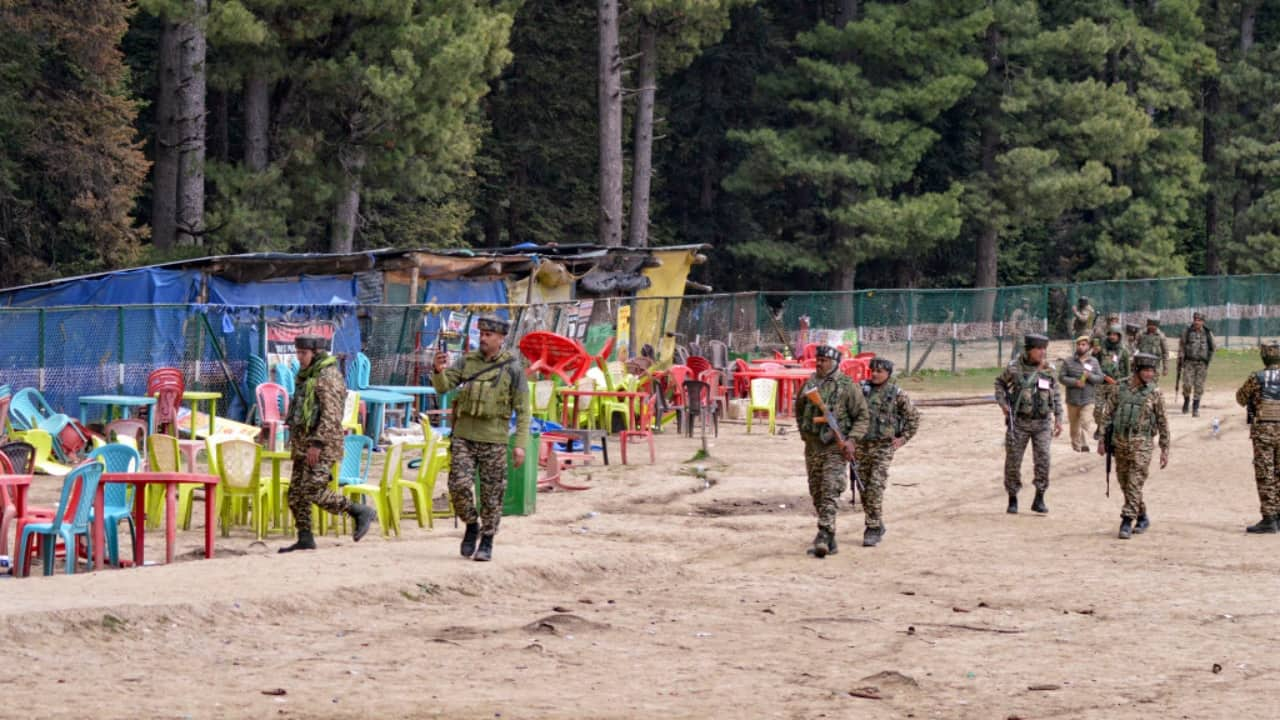 |
|
The Pahalgam terror attack in Jammu and Kashmir has brought to light a concerning trend: the use of Chinese technology by Pakistani terrorists to evade Indian surveillance. Intelligence reports suggest that the terrorists involved in the attack utilized Chinese applications and devices, including satellite phones, to communicate with their handlers in Pakistan. These technologies, banned in India since the 2020 Galwan Valley clashes, raise serious questions about the role of Chinese companies, either intentionally or unintentionally, in facilitating terrorist activities. The alleged use of Huawei satellite phones, smuggled into India from Pakistan or other foreign countries, is particularly alarming. These phones possess built-in satellite communication features, enabling them to bypass traditional cellular networks and potentially evade Indian surveillance systems. The involvement of Chinese technology complicates India's efforts to combat terrorism, adding another layer of complexity to the already strained relationship between India and Pakistan. The situation highlights the need for enhanced security measures and international cooperation to prevent the misuse of technology by terrorist organizations.
The report emphasizes the specific technologies employed by the terrorists, focusing on Huawei's satellite-enabled phones and Chinese applications with advanced encryption. Huawei smartphones, such as the Mate 60 Pro, P60 series, and Nova 11 Ultra, are equipped with features that allow them to connect to China's Tiantong-1 satellite network. These phones require China Telecom SIM cards and subscriptions and are designed with satellite antennas and specialized chips to facilitate satellite connectivity without external equipment. These phones offer low-bandwidth voice and text services, proving especially useful in areas with limited or no cell coverage. The phones use non-terrestrial networks like Iridium to bypass local infrastructure. The article also mentions that some Chinese apps and phones employ end-to-end encryption, advanced encryption believed to be unbreakable by quantum computers, and steganography, which hides messages within files like images and videos. Additionally, they use burst transmitters, sending data in milliseconds, and frequency hopping, rapidly switching radio frequencies to avoid detection. The combination of these technologies provides terrorists with a significant advantage in concealing their communications and coordinating attacks, posing a serious challenge to Indian security agencies.
The article underscores the reasons why terrorists might opt for Chinese technology. Chinese smartphones and devices are generally more affordable than those from other international brands. Moreover, some Chinese manufacturers offer devices with advanced security features, including strong encryption capabilities. While intended to protect user privacy, these features can be exploited by criminals and terrorists to conceal their communications. There have also been longstanding concerns about potential 'backdoors' in Chinese-made technology, which could allow the Chinese government or manufacturers to access user data. Although there is no conclusive evidence that these backdoors were used in this specific case, the possibility remains a significant concern. The wide availability, affordability, and advanced security features of Chinese technology make it an attractive option for terrorist organizations seeking to circumvent surveillance and coordinate attacks. These factors highlight the challenges faced by security agencies in monitoring and preventing the misuse of technology for nefarious purposes.
The geopolitical implications of the use of Chinese technology in the Pahalgam attack are significant, especially considering the already tense relationship between India and Pakistan. China has expressed support for Pakistan, advocating for an 'impartial investigation' into the attack and reaffirming its commitment to its 'all-weather strategic cooperative partner.' This support, coupled with reports of Chinese technology being used by terrorists, raises concerns about China's potential role in enabling or indirectly supporting terrorist activities against India. India has long accused Pakistan of supporting and harbouring terror groups, and the involvement of Chinese technology further complicates the issue. The growing nexus between Pakistani-backed terror outfits and Chinese-made devices has serious ramifications for India's security policy and its efforts to combat terrorism in the region. The article highlights the need for India to strengthen its security measures, enhance its surveillance capabilities, and engage in diplomatic efforts to address the issue of Chinese technology being used for terrorist purposes.
Furthermore, the narrative woven by the article paints a picture of a technologically sophisticated enemy adept at exploiting vulnerabilities in India's security apparatus. The use of Chinese satellite phones and encrypted messaging apps allows terrorists to communicate securely and coordinate their activities without fear of detection by conventional surveillance methods. The reliance on these advanced technologies suggests that terrorist organizations are continuously evolving and adapting their tactics to stay ahead of security agencies. This necessitates a proactive and adaptive approach to counter-terrorism, involving investments in advanced surveillance technologies, cybersecurity measures, and intelligence gathering capabilities. The article implies that India must not only address the immediate threat posed by the Pahalgam attack but also prepare for future challenges posed by the evolving tactics and technologies employed by terrorist organizations.
The article's concluding remarks emphasize the strategic implications of the incident, suggesting that the use of Chinese technology by Pakistani terrorists could significantly impact India's security policy and its efforts to combat terrorism in the region. The author highlights the need for India to strengthen its security measures, enhance its surveillance capabilities, and engage in diplomatic efforts to address the issue of Chinese technology being used for terrorist purposes. Ultimately, the article presents a compelling case for increased vigilance and proactive measures to prevent the misuse of technology by terrorist organizations and to protect India's national security interests. The narrative serves as a wake-up call, urging policymakers and security agencies to address the challenges posed by the evolving tactics and technologies employed by terrorist organizations.
